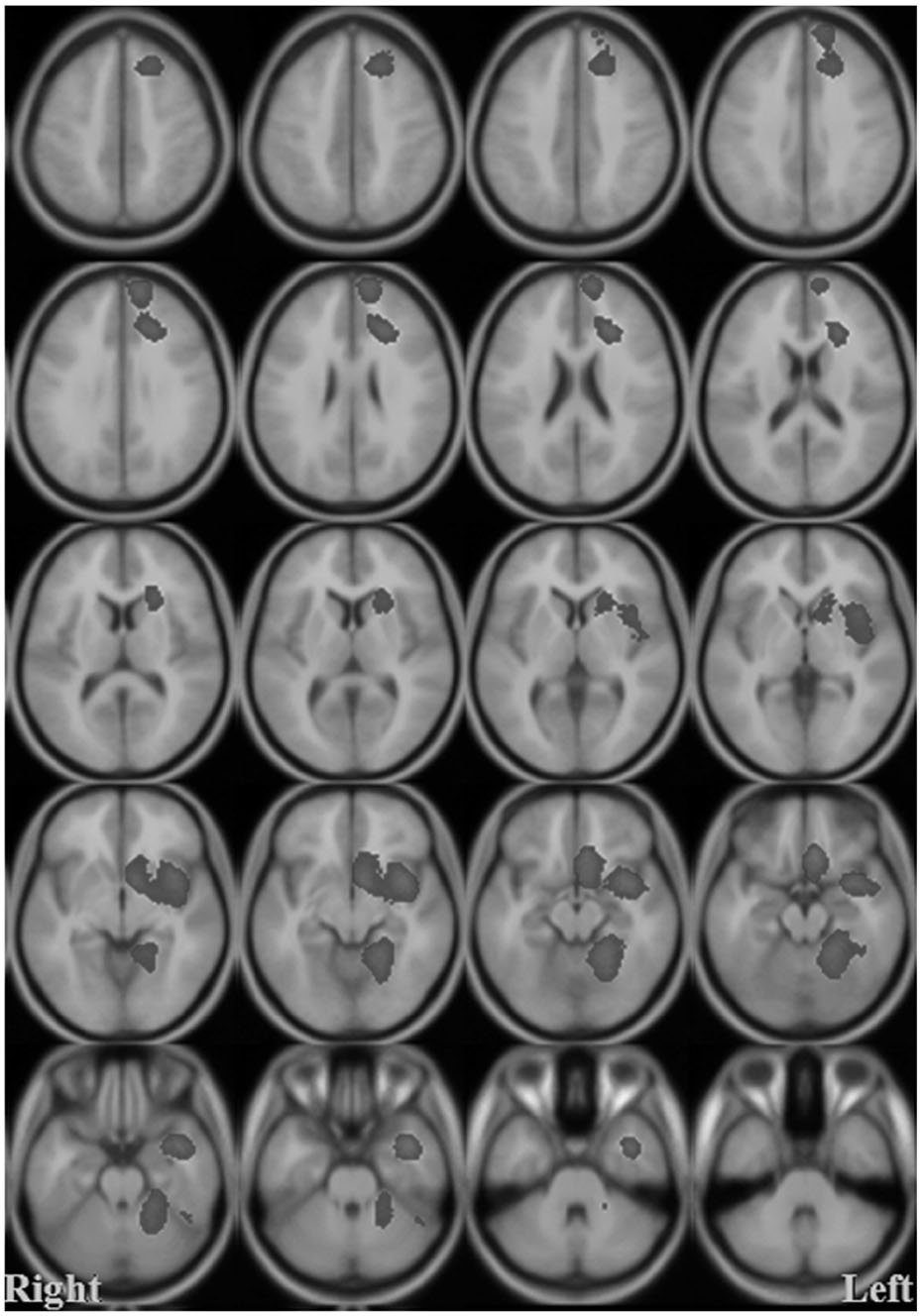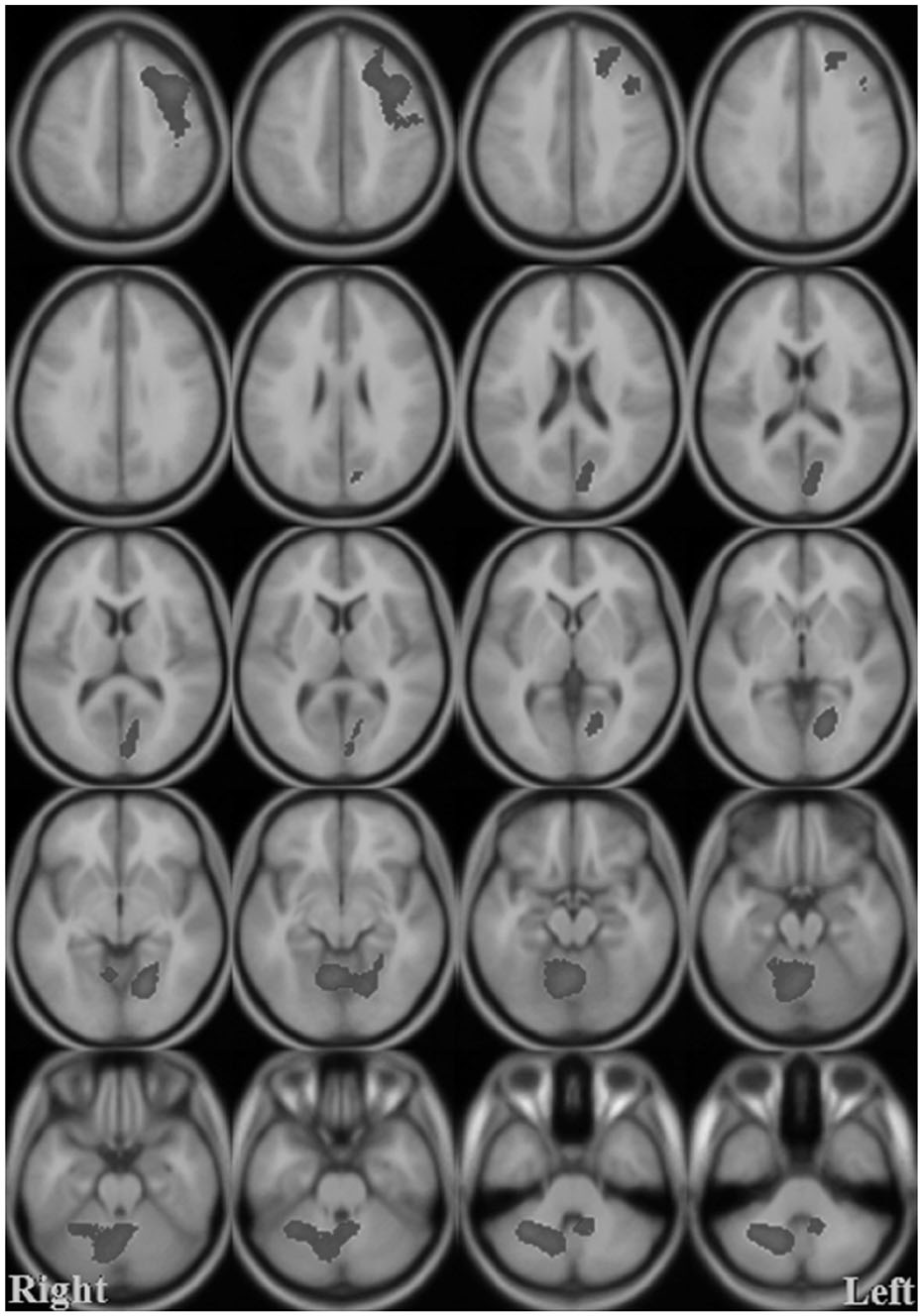Korean J Radiol.
2007 Dec;8(6):458-465. 10.3348/kjr.2007.8.6.458.
Assessment of Cerebrovascular Reserve before and after STA-MCA Bypass Surgery by SPECT and SPM Analysis
- Affiliations
-
- 1Department of Radiology, The Catholic University of Korea, Seoul, Korea. nm@catholic.ac.kr
- 2Department of Neurosurgery, The Catholic University of Korea, Seoul, Korea.
- 3Department of BioSystems, Korea Advanced Institute of Science and Technology, Daejeon, Korea.
- 4Department of Psychiatry, Columbia College of Physicians and Surgeons and the New York State Psychiatric Institute, New York, USA.
- KMID: 1089432
- DOI: http://doi.org/10.3348/kjr.2007.8.6.458
Abstract
- OBJECTIVE: The purpose of this study was to objectively assess the efficacy of superficial temporal artery to middle cerebral artery (STA-MCA) bypass surgery using Technetium (Tc)-99m-ethyl cysteinate dimer (ECD) single photon emission computed tomography (SPECT) in patients who underwent STA-MCA bypass surgery. MATERIALS AND METHODS: Brain perfusion SPECT images obtained at baseline and after the administration of acetazolamide were reconstructed using statistical parametric mapping in 23 patients, both before and after STA-MCA bypass surgery. The clinical outcomes of the surgery were also recorded and compared with the hemodynamic changes. A voxel with an uncorrected p-value of less than 0.001 was considered to be statistically significant. RESULTS: SPECT images of the territory supplied by the bypass graft showed an increase in both cerebrovascular flow and reserve at baseline, and the increase was significantly higher following the administration of acetazolamide. All patients showed improvement of clinical symptoms and increased blood flow to the left temporal, parietal, and frontal cortices as well as the thalamus. CONCLUSION: Brain SPECT effectively and objectively demonstrated the improved outcomes of STA-MCA bypass surgery, and thus may be used in postoperative analyses.
MeSH Terms
-
Acetazolamide/diagnostic use
Adult
Aged
Brain/*radionuclide imaging
Brain Mapping/methods
Carotid Stenosis/surgery
*Cerebral Revascularization
*Cerebrovascular Circulation
Cysteine/analogs & derivatives/diagnostic use
Female
Follow-Up Studies
Humans
Image Processing, Computer-Assisted
Intracranial Arteriosclerosis/surgery
Male
Middle Aged
Middle Cerebral Artery/*surgery
Models, Statistical
Organotechnetium Compounds/diagnostic use
Predictive Value of Tests
Radiopharmaceuticals/diagnostic use
Temporal Arteries/*surgery
Tomography, Emission-Computed, Single-Photon/*methods
Treatment Outcome
Figure
Reference
-
1. Batjer HH, Devous MD Sr, Purdy PD, Mickey B, Bonte FJ, Samson D. Improvement in regional cerebral blood flow and cerebral vasoreactivity after extracranial-intracranial arterial bypass. Neurosurgery. 1988. 22:913–919.2. Yasui N, Suzuki A, Sayama I, Kawamura S, Shishido F, Uemura K. Comparison of the clinical results of STA-MCA anastomosis and the medical treatment in the cerebral low perfusion patients with viable brain tissue. Neurol Res. 1991. 13:84–88.3. Anderson DE, McLane MP, Reichman OH, Origitano TC. Improved cerebral blood flow and CO2 reactivity after microvascular anastomosis in patients at high risk for recurrent stroke. Neurosurgery. 1992. 31:26–34.4. Schmiedek P, Piepgras A, Leinsinger G, Kirsch CM, Einhüpl K. Improvement of cerebrovascular reserve capacity by EC-IC arterial bypass surgery in patients with ICA occlusion and hemodynamic cerebral ischemia. J Neurosurg. 1994. 81:236–244.5. Iwama T, Hashimoto N, Takagi Y, Tsukahara T, Hayashida K. Predictability of extracranial/intracranial bypass function: a retrospective study of patients with occlusive cerebrovascular disease. Neurosurgery. 1997. 40:53–60.6. Kuroda S, Houkin K, Kamiyama H, Mitsumori K, Iwasaki Y, Abe H. Long-term prognosis of medically treated patients with internal carotid or middle cerebral artery occlusion: can acetazolamide test predict it? Stroke. 2001. 32:2110–2116.7. The EC/IC Bypass study group. Failure of extracranial-intracranial arterial bypass to reduce the risk of ischemic stroke. The results of a international randomized trial. N Engl J Med. 1985. 313:1191–1120.8. Ozgur HT, Kent Walsh T, Masaryk A, Seeger JF, Williams W, Krupinski E, et al. Correlation of cerebrovascular reserve as measured by acetazolamide-challenged SPECT with angiographic flow patterns and intra- or extracranial arterial stenosis. AJNR Am J Neuroradiol. 2001. 22:928–936.9. Schroeder T. Cerebrovascular reactivity to acetazolamide in carotid artery disease: enhancement of side-to-side CBF asymmetry indicates critically reduced perfusion pressure. Neurol Res. 1986. 8:231–236.10. Vorstrup S. Tomographic cerebral blood flow measurements in patients with ischemic cerebrovascular disease and evaluation of the vasodilatory capacity by the acetazolamide test. Acta Neurol Scand Suppl. 1988. 114:1–48.11. Ishikawa T, Houkin K, Abe H, Isobe M, Kamiyama H. Cerebral haemodynamics and long-term prognosis after extracranial-intracranial bypass surgery. J Neurol Neurosurg Psychiatry. 1995. 59:625–628.12. Klijn CJ, Kappelle LJ, van der Zwan A, van Gijn J, Tulleken CA. Excimer laser-assisted high-flow extracranial/intracranial bypass in patients with symptomatic carotid artery occlusion at high risk of recurrent cerebral ischemia: safety and long-term outcome. Stroke. 2002. 33:2451–2458.13. Kohno K, Oka Y, Kohno S, Ohta S, Kumon Y, Sakaki S. Cerebral blood flow measurement as an indicator for an indirect revascularization procedure for adult patients with moyamoya disease. Neurosurgery. 1998. 42:752–758.14. Powers WJ, Grubb RL Jr, Raichle ME. Clinical results of extracranial-intracranial bypass surgery in patients with hemodynamic cerebrovascular disease. J Neurosurg. 1989. 70:61–67.15. Lee HY, Paeng JC, Lee DS, Lee JS, Oh CW, Cho MJ, et al. Efficacy assessment of cerebral arterial bypass surgery using statistical parametric mapping and probabilistic brain atlas on basal/acetazolamide brain perfusion SPECT. J Nucl Med. 2004. 45:202–206.
- Full Text Links
- Actions
-
Cited
- CITED
-
- Close
- Share
- Similar articles
-
- Hemodynamic Outcome of Successful Bypass Surgery in Patients with Atherosclerotic Cerebrovascular Disease: A study with Acetazolamide and (99m)Tc-ECD SPECT
- Restoration of Vasoreactivity in Patients with Symptomatic ICA Occlusion after Extracranial-Intracranial Bypass Surgery
- Extracranial-Intracranial Bypass Surgery: Surgical Techniques and Perioperative Management
- The Serial Change of Cerebral Hemodynamics by Vascular Territory after Extracranial-Intracranial Bypass Surgery in Patients with Atherosclerosis of Cerebral Arteries
- Revision Superficial Temporal Artery-Middle Cerebral Artery Bypass Surgery for Recurrent Acute Ischemic Stroke Due to Delayed Occlusion of the Bypass Graft





